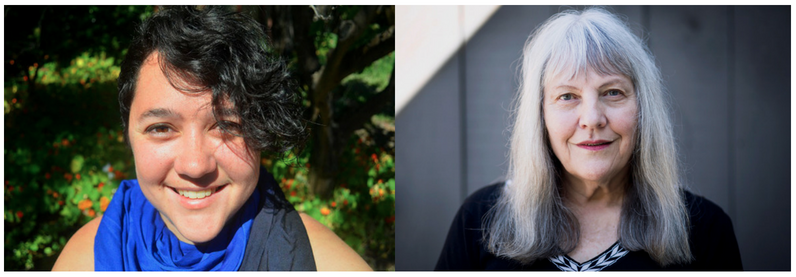[ap_spacing spacing_height=”20px”]Co-Design Series Part 1[ap_spacing spacing_height=”28px”]
[ap_spacing spacing_height=”20px”]We (Ari Sahagún and June Holley) are working on a project to help network participants shift their values, behaviors, and skills while they create new network structures to fit these values. Over the next few months, we will be sharing a set of blog posts about our experiences, takeaways and reflections. We invite you to share your own experiences in creating learning systems and join us in dialogue about the issues we raise.
We originally talked about our project as creating a “network fitbit”: a phone-based platform that provided feedback to network participants on the degree to which their work and network communications reflected network’s values, skills and behaviors. We soon realized that we were too caught up in the “what” and hadn’t thought enough about the “how.”
We started asking questions such as: “Who would design the app?” “What data would be useful to collect to assess and support changing behaviors?” Trying to answer these questions led us to dig into the research on design processes such as user experience and product design. We realized that traditional product design processes were reflective of our 20th century society: external experts develop a product and then marketing convinces us to buy it. We knew we didn’t want the “network fitbit” to be another example of that.
We dug more and found new approaches that create more space in the process for user input, feedback, and ownership.
This research helped us move from a product-centric approach to a process-centered approach. How people engage in design turns out to be every bit as important as the product being developed. And the whole process of design turns out to be a foundational process for networks. (More on that later!)
We also realized that we needed to learn a lot more about how people, groups, organizations, systems and cultures change or transform.
We also began to see that what we wanted to do was not develop a tracking tool but, instead, develop a co-design and learning system to support transformative change. More on that in a later post!
So we’re opening up this first blog post as an invitation to join us in this learning process. With our shared goal of creating stronger more effective networks, let’s think about what would help us recognize and change behaviors that don’t support the network mindset or values.
What would help you and your network see changes?
How do you co-design programs, websites, communications platforms, and collaborations in your networks?
Please share with us in the comment section below.
If this is interesting to you, email us and we will invite you to learning pop-ups and other activities.
June Holley and Ari Sahagun
info@dev.networkweaver.com
11 Comments
Comments are closed.

I’d be interested to join. I am focusing on building a global network of social change campaigners who can learn from each other more quickly and adapt their work. Looking at scaling peer learning, adaptability and cohesiveness among social change campaigners
The biggest thing I want to know is if my efforts to help a network partner, paid off. For example, if I forward a job posting to someone I think would do a good job, I would like to know if this was worth my time and the time of my partners.
I also would like to have an easy way to let my partners know that I’ve helped them.
So many people in our collaborative focus on the ‘what’ and not the ‘how’. And it is the ‘how’ that is what we need to help us transform from a collaborative to a movement…Our ACE Collaborative has a history of being very productive when we had a paid coordinator but now we are moving towards a network yet don’t have a clear path on how to make this transformation.
We have less experience co-designing platforms, but have just co-designed an update of our website to reflect newer language and resources. We had an intern who gathered feedback from our group, made some revisions, then posted the pages back to our group as Google docs that we all edited and commented on. Then he (miraculously) combined the feedback into an updated website. He presented it back to the Collaborative and everyone was encouraged to review and recommend additional edits.
How can we grow as a network without someone paid to help move us forward? How can we create a path that sets us up to bring more people into our current collaborative effort in order to move towards a broader network that weaves work across groups together? It involves the ‘how’…and that is why I am so interested in your work.
Thanks so much for sharing.
I would be interested in learning pop-ups.
I am interested. I am an Early Childhood Coordinator responsible for program development.
Please invite me to the pop-ups!
I would be willing to participate in this discussion. I’m working on network-based technology development and would be glad to pitch in.
How to find, invite, reach individuals that wish build connections i.e., knit and know networks?